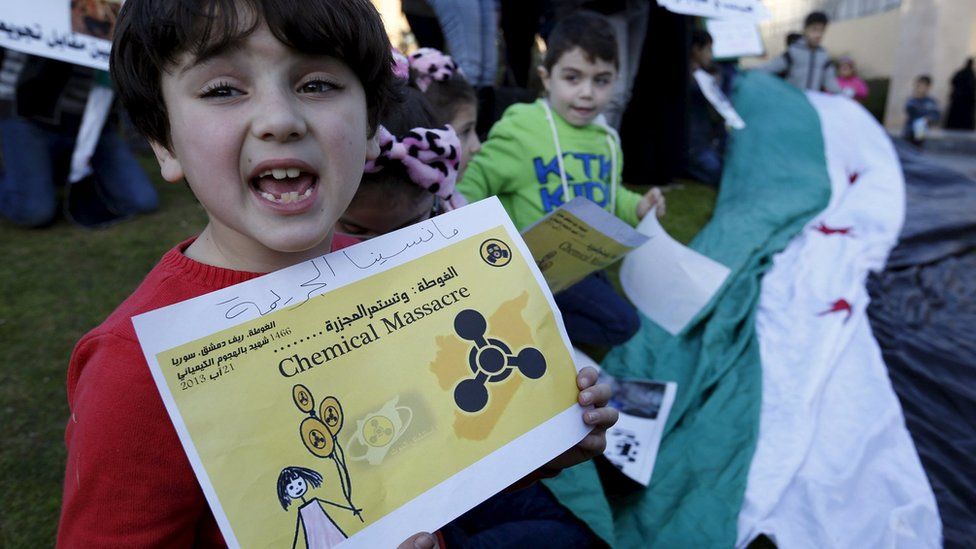Syria conflict: OPCW finds signs of sarin exposure
- Published

The Organisation for the Prohibition of Chemical Weapons has found indications that some Syrians have been exposed to sarin or a similar nerve agent.
A report by the watchdog said it was investigating 11 chemical-weapon attacks alleged by Syria's government.
In one case, blood samples showed victims had been exposed to sarin or a sarin-like substance.
The OPCW did not say when or where the attacks occurred, or which side in the five-year conflict was responsible.
Hundreds were killed when rockets filled with sarin were fired at several opposition-held suburbs of the capital Damascus in 2013. Western powers said only the government could have been responsible, but it blamed rebels.
'Further investigation necessary'
The results of the OPCW's fact-finding mission were contained in the latest report on Syria from the group's Director General Ahmet Uzumcu, which was attached in a letter by UN Secretary General Ban Ki-moon to the UN Security Council.
"In one instance, analysis of some blood samples indicates that individuals were at some point exposed to sarin or a sarin-like substance," he added.
"Further investigation would be necessary to determine when or under what circumstances such exposure might have occurred."
Sarin
- Twenty times as deadly as cyanide and impossible to detect because it is clear, colourless and tasteless, and has no odour in its purest form. It can also spread through the air
- As with all nerve agents, Sarin deactivates signals that cause human nerve cells to fire, triggering convulsive spasms
- Sufficient exposure can lead to death via asphyxiation within minutes
- The UN found "convincing evidence" that rockets containing sarin were fired at suburbs of Damascus on 21 August 2013, killing hundreds of people
The Syrian government agreed to destroy its chemical arsenal after the 2013 attack. The 1,300 tons of chemical weapons it declared - including the precursor chemicals combined to produce Sarin - have since been destroyed.
Despite this, the OPCW has documented the use of toxic chemicals, such as chlorine and ammonia, in a series of deadly attacks on rebel-held northern villages between April and July 2014.
The jihadist group Islamic State (IS) has also been accused of using chemical weapons, including sulphur mustard. The OPCW said the blister agent was used in an attack on the northern town of Marea in August that killed a baby.
Last month, opposition activists said at least five people were had been in a suspected chemical weapons attack outside Damascus.
The victims reportedly suffocated to death after government rockets and barrel bombs struck the rebel-held suburb of Muadhamiya.